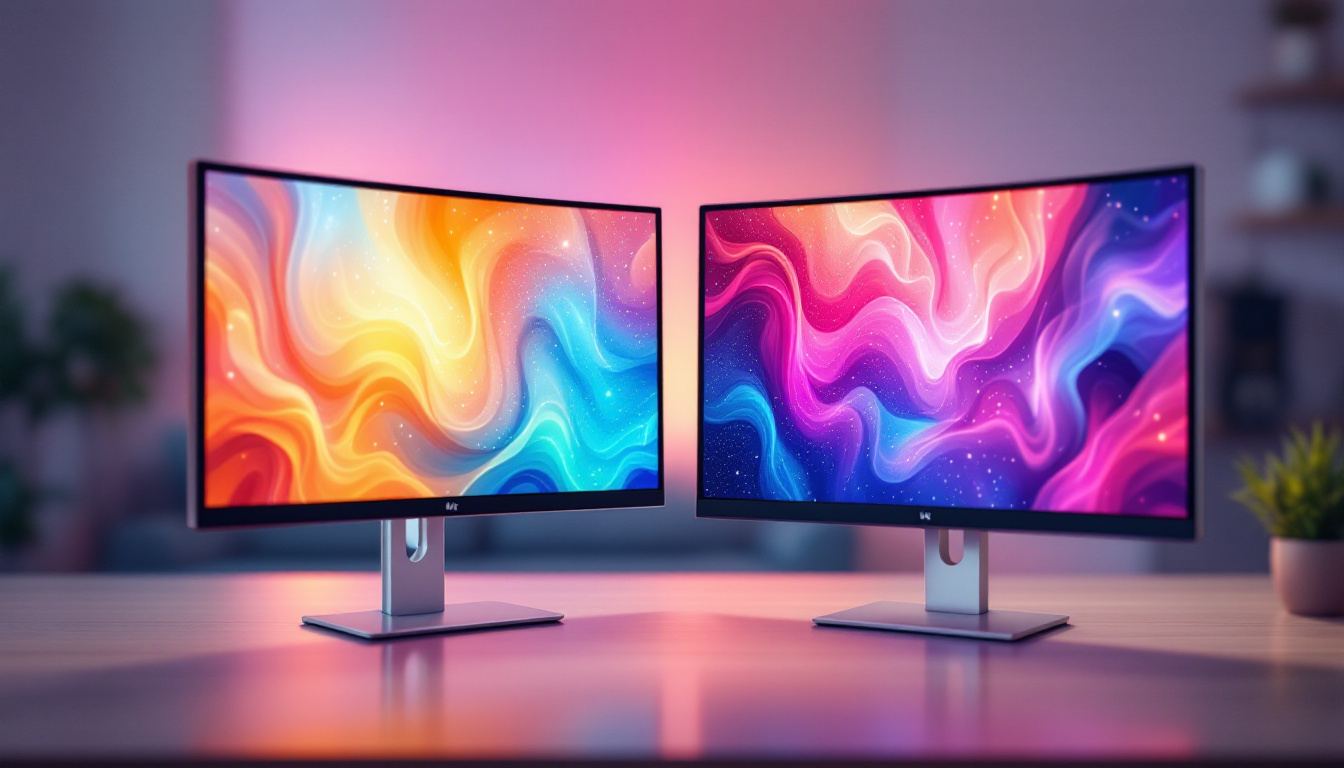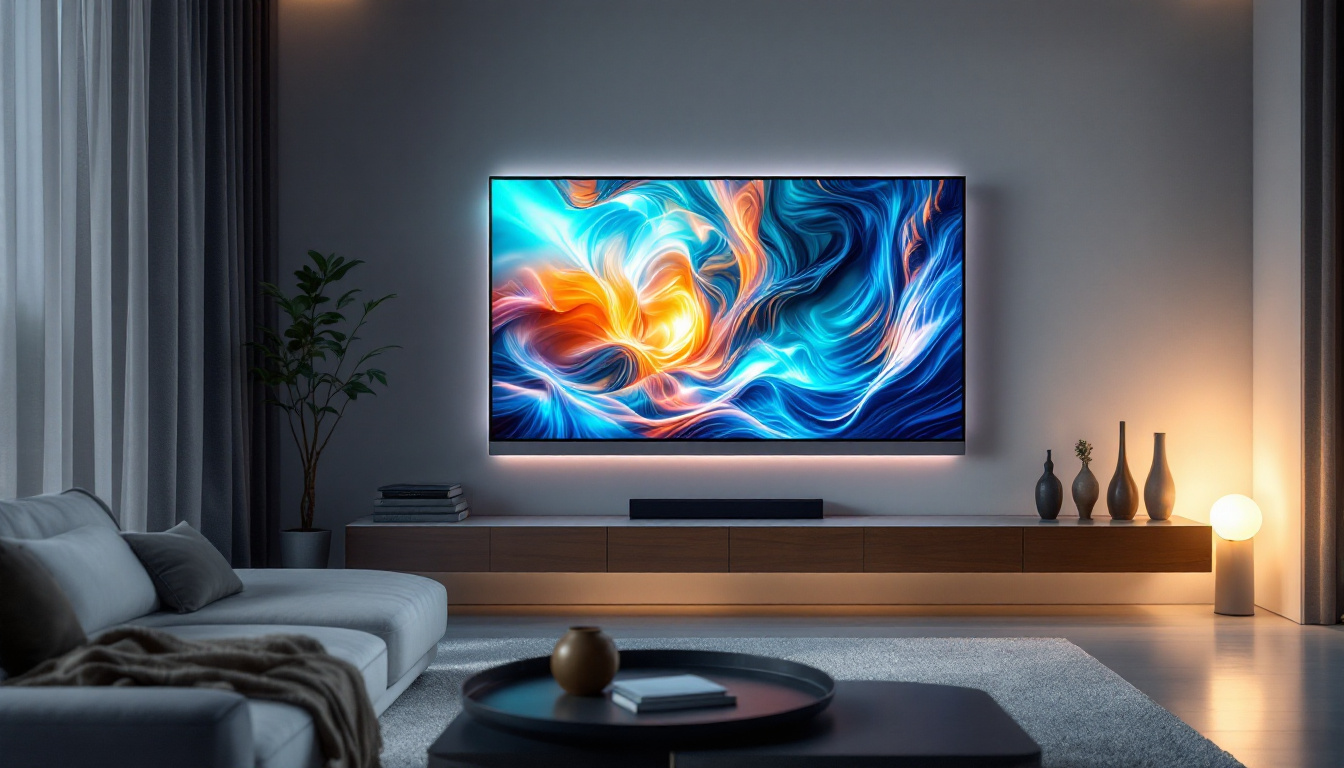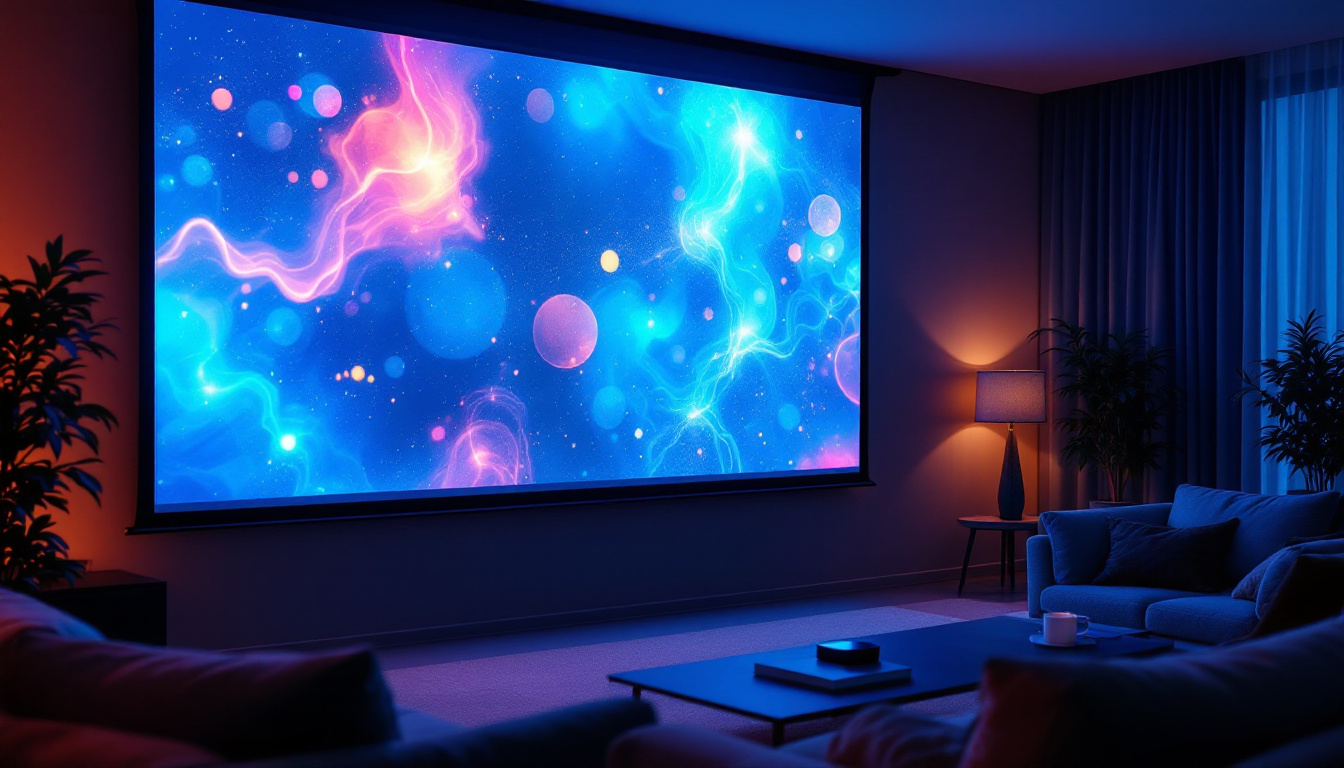Difference Between LED & LCD Monitor: LED Display Explained
In the world of computer displays, two terms often come up: LED and LCD. While many users may use these terms interchangeably, they refer to different technologies that have distinct characteristics and benefits. Understanding these differences can help consumers make informed decisions when purchasing a monitor. This article will delve into the specifics of LED and LCD monitors, exploring their features, advantages, and ideal use cases.
Understanding LCD Technology
Liquid Crystal Display (LCD) technology has been a staple in the display industry for decades. It utilizes liquid crystals sandwiched between two layers of glass or plastic. When an electric current passes through the liquid crystals, they align to allow varying degrees of light to pass through, creating images on the screen.
How LCD Works
LCD monitors rely on a backlight to illuminate the display. This backlight is typically provided by fluorescent lamps, which are known as Cold Cathode Fluorescent Lamps (CCFL). The light from these lamps passes through the liquid crystals, which modulate the light to produce images. The combination of the backlight and the liquid crystals allows for a wide range of colors and brightness levels. In recent years, advancements in technology have introduced LED backlighting, which offers even greater energy efficiency and color accuracy, enhancing the overall visual experience.
Advantages of LCD Monitors
One of the primary advantages of LCD monitors is their energy efficiency. Compared to older CRT monitors, LCDs consume significantly less power, making them a more environmentally friendly choice. Additionally, LCD monitors are generally lightweight and slim, allowing for easy installation and portability. This slim design has also led to the development of ultra-thin televisions and monitors that can be mounted on walls, saving valuable space in homes and offices.
Moreover, LCD technology provides excellent image clarity and sharpness, making it suitable for various applications, from office work to graphic design. The ability to display high resolutions also contributes to a more enjoyable viewing experience. Furthermore, LCDs are known for their minimal flicker and reduced eye strain, making them a preferred option for long hours of use. The technology also supports wide viewing angles, ensuring that colors remain consistent and vibrant even when viewed from the side, which is particularly beneficial in collaborative work environments or during presentations.
Introduction to LED Technology
Light Emitting Diode (LED) technology is often seen as an evolution of LCD technology. While LED monitors still utilize liquid crystals to create images, they differ in their backlighting method. Instead of CCFLs, LED monitors use light-emitting diodes to illuminate the display.
How LED Works
LED monitors can be further categorized into two types: edge-lit and full-array. Edge-lit LED monitors have LEDs placed along the edges of the screen, which helps to create a thinner profile. In contrast, full-array LED monitors have a grid of LEDs behind the entire screen, allowing for more precise control over brightness and contrast levels.
This difference in backlighting technology not only enhances the overall image quality but also improves the monitor’s ability to display deeper blacks and brighter whites. As a result, LED monitors are often favored for tasks that require high color accuracy and contrast, such as video editing and gaming.
Advantages of LED Monitors
LED monitors offer several advantages over traditional LCDs. One of the most significant benefits is their superior energy efficiency. LED technology consumes less power than CCFLs, which translates to lower electricity bills and a reduced carbon footprint.
Furthermore, LED monitors typically have a longer lifespan compared to their LCD counterparts. This longevity is due to the durability of LED lights, which do not burn out as quickly as fluorescent bulbs. Users can enjoy a high-quality display for years without the need for frequent replacements.
In addition to energy efficiency and longevity, LED monitors also boast faster response times, which is crucial for fast-paced activities such as gaming or watching action-packed movies. The rapid switching of LED lights allows for smoother transitions between frames, minimizing motion blur and enhancing the overall viewing experience. This feature is particularly appealing to gamers who require quick reflexes and precise visuals to maintain a competitive edge.
Moreover, LED technology has paved the way for advancements in display resolution and size. With the introduction of 4K and even 8K resolutions, LED monitors are capable of delivering stunningly detailed images that are ideal for professional photographers and graphic designers. The ability to produce a wider color gamut also means that users can experience more vibrant and lifelike colors, making LED monitors a popular choice for creative professionals who rely on accurate color representation in their work.
Key Differences Between LED and LCD Monitors
While both LED and LCD monitors utilize liquid crystals to display images, the differences in their backlighting technology lead to several key distinctions. Understanding these differences can help users choose the right monitor for their needs.
Backlighting Technology
The most apparent difference between LED and LCD monitors lies in their backlighting technology. As previously mentioned, LCD monitors use CCFLs, while LED monitors utilize light-emitting diodes. This fundamental difference affects various aspects of the display, including brightness, contrast, and energy consumption.
LED backlighting allows for greater control over brightness levels, resulting in improved contrast ratios. This feature is particularly noticeable in darker scenes, where LED monitors can produce deeper blacks compared to traditional LCDs. Moreover, LED technology can enable features such as local dimming, where specific areas of the screen can be dimmed or brightened independently, further enhancing the viewing experience by providing richer details in both shadows and highlights.
Image Quality and Color Accuracy
Image quality is another area where LED monitors often outperform LCDs. The ability to achieve higher brightness levels and better contrast ratios results in more vibrant colors and sharper images. This enhanced image quality is especially beneficial for professionals in fields such as graphic design, photography, and video production, where color accuracy is crucial. In addition, LED monitors are often equipped with advanced technologies such as HDR (High Dynamic Range), which allows for a more realistic representation of scenes by expanding the range of both brightness and color, making images appear more lifelike.
Additionally, many LED monitors support a wider color gamut, allowing them to display a broader range of colors. This feature is essential for users who require precise color reproduction for their work. With the advent of technologies like Quantum Dot and OLED, some LED monitors can achieve even more impressive color accuracy and vibrancy, making them ideal for high-end applications where visual fidelity is paramount.
Energy Efficiency and Lifespan
Energy efficiency is a significant consideration for many consumers, and LED monitors excel in this area. They consume less power than traditional LCDs, making them a more sustainable choice. This energy efficiency not only benefits the environment but also results in lower operating costs for users. Furthermore, the reduced heat output of LED monitors contributes to a cooler workspace, which can enhance comfort during prolonged use.
In terms of lifespan, LED monitors have a clear advantage. The durability of LED lights means they can last significantly longer than CCFLs, reducing the need for replacements and maintenance. For users looking for a long-term investment, LED monitors are often the better choice. Additionally, the advancements in LED technology have led to the development of more robust components that can withstand the rigors of daily use, ensuring that users can rely on their monitors for years to come without significant degradation in performance.
Choosing the Right Monitor for Your Needs
When deciding between an LED and an LCD monitor, it is essential to consider the intended use. Different applications may require different features, and understanding these needs can guide the selection process.
For General Use
For everyday tasks such as web browsing, word processing, and casual gaming, both LED and LCD monitors can perform adequately. However, LED monitors may provide a better overall experience due to their superior image quality and energy efficiency. Users who spend long hours in front of a monitor may appreciate the reduced eye strain and improved brightness levels offered by LED technology.
For Professional Use
Professionals in creative fields, such as graphic design, photography, and video editing, should prioritize monitors that offer high color accuracy and contrast. In this case, LED monitors are often the preferred choice due to their ability to reproduce vibrant colors and deep blacks. Additionally, features such as wide color gamut support and high resolution can further enhance the viewing experience for professionals.
For Gaming
Gamers often seek monitors that provide fast response times, high refresh rates, and excellent image quality. LED monitors are generally better suited for gaming due to their superior brightness and contrast levels. Many modern LED gaming monitors also come equipped with features such as adaptive sync technology, which helps eliminate screen tearing and stuttering during gameplay.
Conclusion: Making an Informed Choice
In summary, while LED and LCD monitors share some similarities, their differences in backlighting technology lead to distinct advantages and disadvantages. LED monitors typically offer better image quality, energy efficiency, and lifespan compared to traditional LCDs. However, the choice between the two ultimately depends on individual needs and preferences.
By understanding the differences between LED and LCD monitors, consumers can make informed decisions that align with their specific requirements. Whether for general use, professional applications, or gaming, there is a monitor out there that can meet the demands of any user.
As technology continues to evolve, staying informed about the latest advancements in display technology will ensure that users can make the best choices for their viewing needs. Investing in the right monitor can significantly enhance productivity, enjoyment, and overall satisfaction with the digital experience.
Discover LumenMatrix’s Advanced LED Display Solutions
Ready to experience the pinnacle of LED display technology? LumenMatrix is at the forefront of innovation, offering a diverse range of LED display solutions tailored to meet your unique needs. From vibrant Indoor LED Wall Displays to dynamic Outdoor LED Wall Displays, and from mobile Vehicle LED Displays to interactive Floor LED Displays, our products are designed to captivate and engage. Embrace the future of visual communication with our Custom LED Displays, All-in-One LED Displays, and revolutionary LED Transparent Displays. Elevate your brand’s visibility and create unforgettable visual experiences with LumenMatrix. Check out LumenMatrix LED Display Solutions today and transform your digital signage into a powerful statement.































